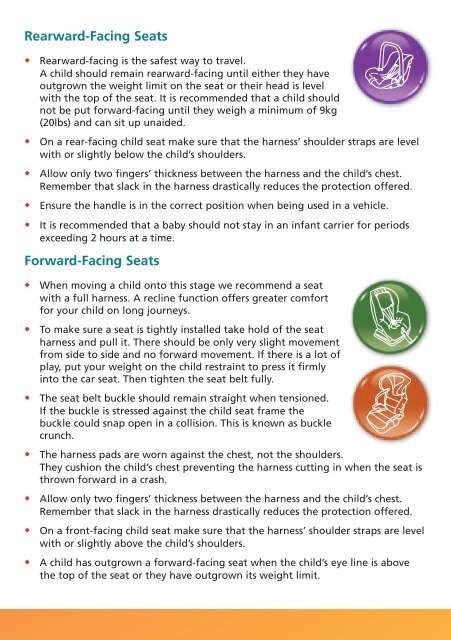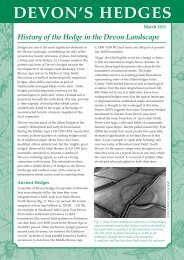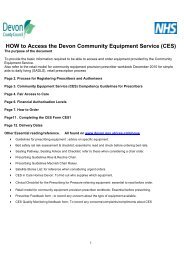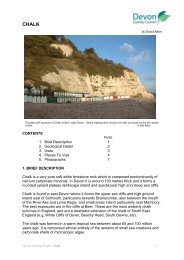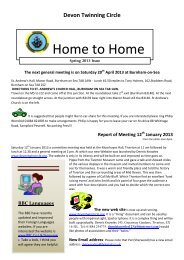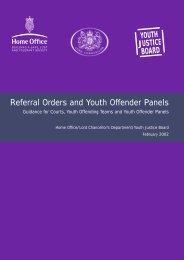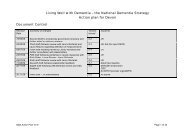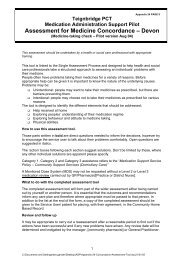119877 Child in Car Safety Leaflet
119877 Child in Car Safety Leaflet
119877 Child in Car Safety Leaflet
Create successful ePaper yourself
Turn your PDF publications into a flip-book with our unique Google optimized e-Paper software.
Rearward-Fac<strong>in</strong>g Seats<br />
• Rearward-fac<strong>in</strong>g is the safest way to travel.<br />
A child should rema<strong>in</strong> rearward-fac<strong>in</strong>g until either they have<br />
outgrown the weight limit on the seat or their head is level<br />
with the top of the seat. It is recommended that a child should<br />
not be put forward-fac<strong>in</strong>g until they weigh a m<strong>in</strong>imum of 9kg<br />
(20lbs) and can sit up unaided.<br />
• On a rear-fac<strong>in</strong>g child seat make sure that the harness’ shoulder straps are level<br />
with or slightly below the child’s shoulders.<br />
• Allow only two f<strong>in</strong>gers’ thickness between the harness and the child’s chest.<br />
Remember that slack <strong>in</strong> the harness drastically reduces the protection offered.<br />
• Ensure the handle is <strong>in</strong> the correct position when be<strong>in</strong>g used <strong>in</strong> a vehicle.<br />
• It is recommended that a baby should not stay <strong>in</strong> an <strong>in</strong>fant carrier for periods<br />
exceed<strong>in</strong>g 2 hours at a time.<br />
Forward-Fac<strong>in</strong>g Seats<br />
• When mov<strong>in</strong>g a child onto this stage we recommend a seat<br />
with a full harness. A recl<strong>in</strong>e function offers greater comfort<br />
for your child on long journeys.<br />
• To make sure a seat is tightly <strong>in</strong>stalled take hold of the seat<br />
harness and pull it. There should be only very slight movement<br />
from side to side and no forward movement. If there is a lot of<br />
play, put your weight on the child restra<strong>in</strong>t to press it firmly<br />
<strong>in</strong>to the car seat. Then tighten the seat belt fully.<br />
• The seat belt buckle should rema<strong>in</strong> straight when tensioned.<br />
If the buckle is stressed aga<strong>in</strong>st the child seat frame the<br />
buckle could snap open <strong>in</strong> a collision. This is known as buckle<br />
crunch.<br />
• The harness pads are worn aga<strong>in</strong>st the chest, not the shoulders.<br />
They cushion the child’s chest prevent<strong>in</strong>g the harness cutt<strong>in</strong>g <strong>in</strong> when the seat is<br />
thrown forward <strong>in</strong> a crash.<br />
• Allow only two f<strong>in</strong>gers’ thickness between the harness and the child’s chest.<br />
Remember that slack <strong>in</strong> the harness drastically reduces the protection offered.<br />
• On a front-fac<strong>in</strong>g child seat make sure that the harness’ shoulder straps are level<br />
with or slightly above the child’s shoulders.<br />
• A child has outgrown a forward-fac<strong>in</strong>g seat when the child’s eye l<strong>in</strong>e is above<br />
the top of the seat or they have outgrown its weight limit.


